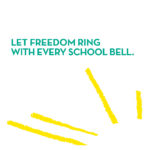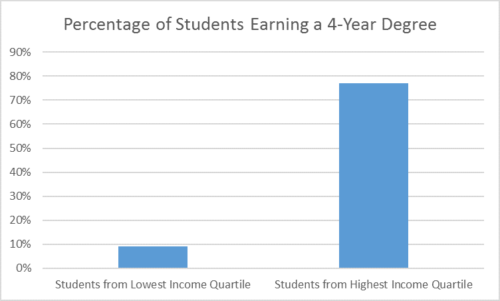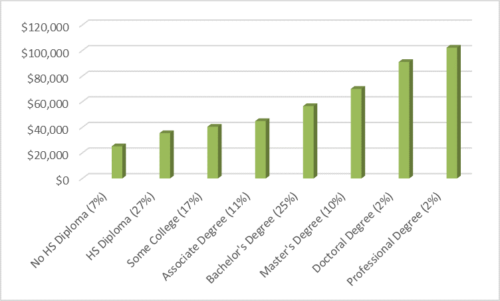
She’s the new George Wallace.
By Steve Schuck
Let me get this straight: According to Randi Weingarten, those of us committed to providing low-income parents the resources to choose the schools they think are best for their children are racists. At the same time, we’re to believe those who oppose emancipating their kids imprisoned in America’s worst-performing schools are in their corner. Maybe the only lesson to be learned here is that hypocrisy and chutzpah are alive and well.
Weingarten has made a career out of protecting those teachers who are failing kids. Unions like hers cannot tolerate empowered parents holding members accountable. Unions like hers prefer to protect their members with tenure rather than hold them accountable — just like every other profession — to the judgments of their customers.
What are the results of the unions’ actions? Half the children in America’s public schools cannot read, write, add, and subtract at grade level, and half the black and brown kids entering ninth grade do not graduate. This, despite the fact that America has spent more money on public education every successive year for decades. Clearly what we’re doing ain’t working for too many kids.
Weingarten’s loyalty is to the system, the blob — ours is to the kids. Her view is that parents exist to serve the interests of schools — ours is the exact opposite. Too many public schools have become employment centers for adults, “warehousing” students rather than educating them. It is no coincidence that the worst-performing schools throughout our country are in the lowest socioeconomic neighborhoods, be they urban or rural, thus perpetuating a tragic cycle of poverty. If justice is to be served, low-income parents should have the means to choose schools that they think are best for their children, just as affluent parents do. Weingarten would close that door of opportunity rather than help us open it wider.
How do we incentivize better results? Easy answer — break the public-school monopoly. Transfer power from providers (the system) to consumers (parents), thus establishing a marketplace in which the former must compete for the business of the latter.
Some say that competition will not work in education, but let’s take a look. Free-market higher education in America is the best in the world, while closed-market K-12 education ranks 20th or 25th. Higher education vouchers (the G.I. Bill) which can be used at Notre Dame, Yeshiva, and S.M.U. forces all universities and colleges to compete even harder to attract students. Charter schools have proven that urban, rural, and minority kids, despite living in difficult circumstances, can be successfully educated; their parents, voting with their feet, choose those that best meet the needs of their children.
Why would anyone of conscience oppose empowering low-income parents with the same school choices their more affluent counterparts currently enjoy? One answer is self-interest. In the case of teachers’ unions, their highest priority is protecting the jobs of too many of those responsible for this unjust disparity in access and opportunity. Those wanting to imprison children in failing schools should be asked if they would volunteer to send their children to the very schools they would prevent others from escaping. Put me down on the side of educational freedom and choice for all.
In our own community, Colorado Springs, several hundred private citizen-champions of choice have voluntarily joined together to support, with their own dollars, Parents Challenge, a unique program that, for 18 years, has been providing information and various levels of financial support to low income parents so they can choose the school they think is best for their children, be it traditional public, charter public, private, or home. Parents attend monthly empowerment sessions, mandatory for Parents Challenge beneficiaries but open to the public, during which they are mentored in subjects they have identified as important to their becoming more informed education consumers and better educators of their own children. Because it’s the only program in the country that (like an education-savings account) funds the full menu of choices and the aforementioned empowerment sessions, Parents Challenge is in the process of becoming available to others around the country.
While it’s time to hold those responsible for this apartheid education system to account, it’s even more important and urgent to focus on helping the kids whose futures, as well as that of our country, depend upon them being taught basic academics, Western values, a work ethic, personal and societal responsibility, and how to pursue a life worth living. Demagogues like Weingarten and her fellow-traveler unionists put their self-interests ahead of the very children who most need hope and access to the American dream. George Wallace disgracefully stood in schoolhouse doors 50 years ago blocking black children from entering. Weingarten is today’s Wallace, standing in the doorways of failing schools preventing children from escaping.
In the words of the old Negro spiritual, “Let my people go!”
Steve Schuck, a real-estate developer in Colorado Springs, is a longtime advocate for school choice.



























CER Had a Very Busy Summer – and It’s Not Over Yet
Here in Washington, DC, most summers are pretty quiet. Not for the Center for Education Reform.
In May, our CEO Jeanne Allen interviewed Secretary of Education Betsy DeVos at the ASU + GSV Summit. The event took place in Salt Lake City, where hundreds of professionals in the ed-tech community were gathered, and was covered by the Associated Press and many other outlets across the country. Then, to cap things off, our board member Michael Moe, the founder and host of the summit, delivered the summit’s keynote address.
But if you know CER, you know that was just the beginning. When the Supreme Court handed down its verdict in Trinity Lutheran v. Comer, we again were all over the media. Jeanne also penned an op-ed about the case for the Orange County Register.
In the meantime, CER made news about educational opportunity in Illinois (check out our op-ed in National Review), and we turned an invitation to appear on Sunday Night With Megyn Kelly into a speaking slot for our board member David Hardy. (David recently retired as president of the Boys’ Latin Charter in Philadelphia.)
Finally, no recap would be complete without mentioning Randi Weingarten. In July, the longtime boss of the American Federation of Teachers ignited a firestorm by likening advocates of school choice to — wait for it — segregationists. CER wasted no time fighting back: we issued statements, we wrote op-eds, we secured op-eds from concerned parents, we started a hash tag, and we created a webpage that features a variety of voices testifying to the outrageousness and dishonesty of Weingarten’s comments.
Of course, it’s only August, so there’s plenty more summer left. Stay tuned for more. (Hint: it involves the NAACP.)
Update 8-24:
And as promised, here’s our new NAACP page. Also, since we last checked in, Jeanne has written two op-eds: one, for HuffPost, about a new EdNext poll, and another, for the Wall Street Journal, about our #ResignRandi campaign.
If you can’t wait until our next update, the best way to stay in the know is via our e-newsletter. It’s free, it’s funny, and it comes out every Tuesday. Sign-up here.